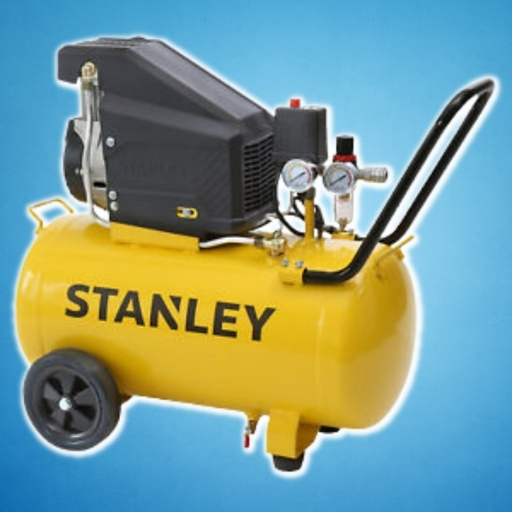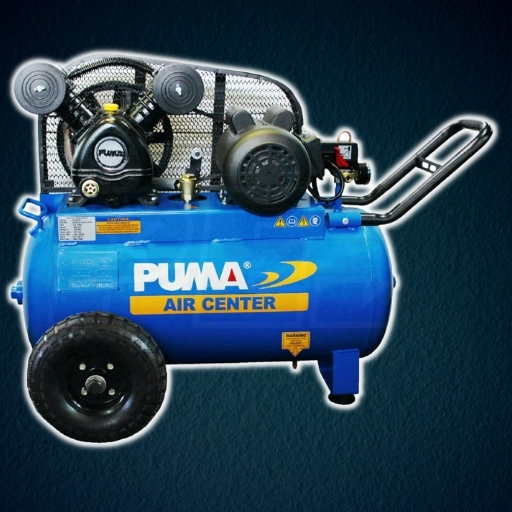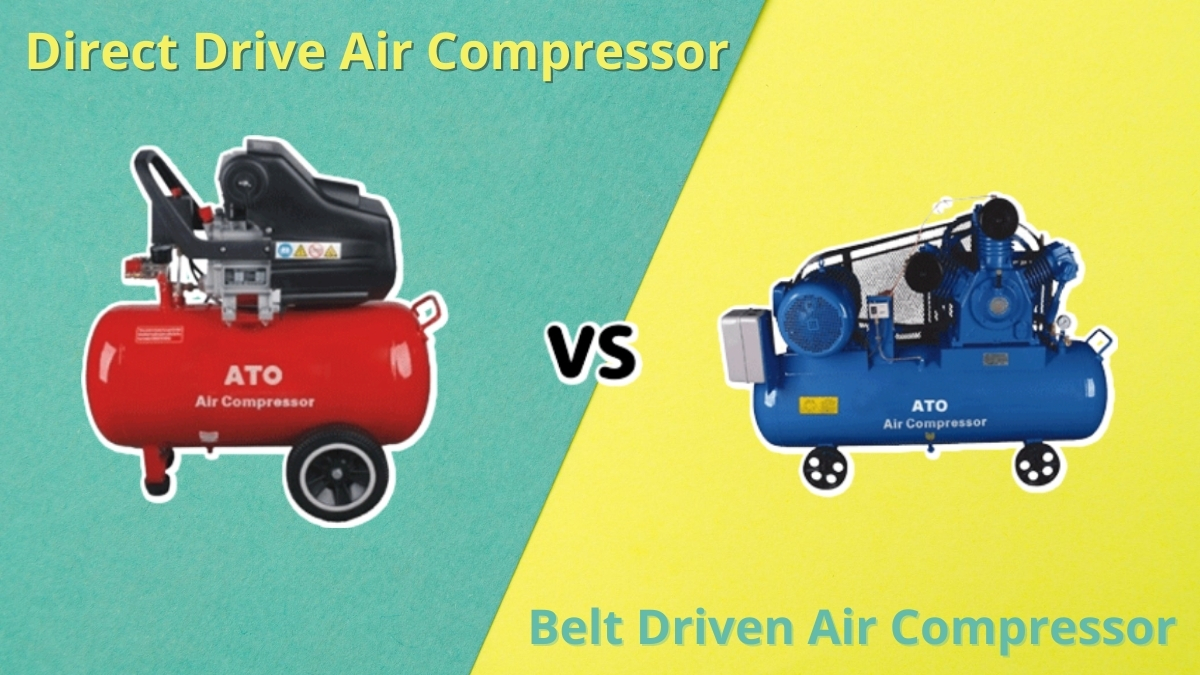As a significant method of energy generation, compressors are used extensively in a variety of industrial areas that include metallurgy, mechanical, electronic power and packaging, medicines, chemical, food textile, transportation, and more.
Motors for air compressors with a rotary screw generally come in two types that are direct driven air compressor and a belt drive air compressor. When a belt drives a compressor, it is connected by a belt motor and the compressors the motor spins, and the belt rotates in tandem, which activates the pump.
Direct Drive Air Compressor
Direct drive motors, as the name implies the motor is connected directly to the crankshaft.
Direct drive and belt models each have advantages and disadvantages that are inherent to their operating principles.

The best decision for you will depend on a variety of factors. This article will go over how a direct drive compressor works and explain some of the major advantages and applications of this kind of machine.
Working Principles
Air compressors all require an energy source. In the case of most types, this is an electrical motor. While some design aspects affect the pressure and capacity rating, the size and performance of the engine are also a factor.
Also to know: How Does an Air Compressor Work?
In general, each 5 CFM at 100psig compressed air that a compressor produces requires a minimum horsepower from engine energy.
The primary difference between the two types of screw compressors is how the motor can transfer force to the compressor. Belt-driven models offer greater flexibility since they can be adjusted to deliver various amounts of airflow capacity and pressure.
Direct drive models, on the other hand, are connected directly or through the fitting. This means they’re less flexible, but they’re more efficient. Manufacturers typically offer less compact HP direct-drive compressors as a complete package.
Direct Drive Advantages
The distinctive style of direct drive models has numerous advantages for users. The most important benefit is that direct drive compressors are equipped with smaller moving parts and, consequently, fewer components that could be subject to wear and wear. This makes them ideal to industrial applications with heavy-duty which belt-driven models can’t perform.
Direct-drive compressors work better because they lose less energy in transmission from motors to crankshafts. While direct-driven compressors are typically more expensive to buy outright, the initial investment will be paid back over time as they’ll use less fuel throughout the compressor’s lifetime.
Direct drive of an air compressor is the term used to describe the motor’s main shaft that drives the rotor through the coupling and gearbox’s speed. It isn’t an actual direct drive in any sense.
We Also reviewed: Best 20 Gallon Air Compressor
In its true sense, direct drive is directly linked to the rotating part (Coaxial) that has identical speed. This is clearly uncommon. So, it’s not true that there isn’t any loss of energy in direct drive.
Belt Driven Air Compressor
Another type of drive driven by belts permits the rotation speed of the rotors to be adjusted through pulleys of different sizes.

This belt-driven system described below is an automated system, which is the latest in technology that is able to meet the following requirements:
- The belt tension of each state running is at the optimal value.
By avoiding tensioning the start excessively, the life of the belt is significantly extended, while minimizing the strain on the motor and the rotor bearing.
Always ensure that you have the correct pulley connector.
It’s simple and quick changing the belt and you don’t need to change the settings that were originally set. - The entire belt-driven system functions smoothly and without any issues.
Difference between direct gear driven and belt driven air compressor
- Efficiency
The high efficiency of gear driven drives can be as high as 98% to 99%, and the outstanding belt driven efficiency can be as high as 99% in normal circumstances.
The distinction between belt driven and gear driven isn’t based on the driving method’s selection, but rather on the design and manufacturing quality and the quality of manufacture. - No-load energy consumption
Concerning the direct drive process for gears the pressure of no-load is usually maintained over 2.5bar some go as high as 4bar to make sure that the gearbox will be lubricated.
Theoretically, the no-load pressure could be zero in the case of belt driven since the oil that is sucked through the rotor can grease the bearings and rotor. For safety reasons, the pressure is kept at around 1.5bar.
For a 160kW directly drive compressor, as an example, operating 8000 hours per year, and of which 15 percent (that equals approximately 1200 hours) of that time is non-load, the machine will use 28800kwh more than a belt-driven air compressor’s electric costs (assuming that the pressure at no-load differs between both compressors is 2 bars approximately 15 percent of the energy consumption difference) In the long term it will not be an insignificant expense. - Oil loss
Practically-trained users have learned that gearboxes are the first system to be affected by the problem of oil loss. Belt driven systems isn’t affected by this danger. - Based on the requirements of the user, design working pressure
Usually , the pressure of working required by the user is not in line with the normal model of manufacture. For instance, the pressure for the user’s needs is 10bar.
By the post-processing status of the equipment, the differences in piping length and the length of sealing means that the pressure of operation in an air compressor is likely to be 11 or 11.5bar.
In this situation the air compressor that has a 13bar of rated pressure is used and the outlet pressure is set to at the required pressure simultaneously. The displacement is basically constant since the working pressure decreases in the end but its speed does not change.
Design of belts driven by the user is a result of advanced technology. Manufacturer just needs to alter the diameter of pulleys to make the pressure to be fully in line with the user’s needs. So, those who use the same motor will get greater air volume. However, the gear drive is not suitable to achieve this. - The pressure change of an air compressor is installed
Sometimes, the customer is hoping to lower the pressure due to the alteration of production conditions, and the pressure of the original purchase is likely to be to be too high or low.
This is very convenient for air compressors that are belt driven that only need replacing the pulley. But, this is costly and laborious for a gear driven compressor. - Installing a new bearings
If rotor bearings need to be replaced, such as for the air compressor driven by gears as well as gearbox, and the gearbox’s bearings require to be replaced, which can result in an enormous amount of expense. But a belt-driven air compressor does not have this issue. - To replace shaft seals
All air compressors have some form of ring shaft seals, which need to be replaced once it has come to a specific time. A gear-driven compressor requires separating the motor and coupler before coming close to seals on the shaft, which takes a lot of time and adds costs for maintenance.
Differentialities in the gear air compressor and belt-driven air compressor has to take the pulley off and then unload the pulley, which is extremely practical. - Failure of the motor or rotor bearing
If the motor or the bearing for the rotor in the air compressor driven by gear is damaged, they typically cause other parts connected to it, which can harm. However, the belt-driven air compressor is not in such a situation.
